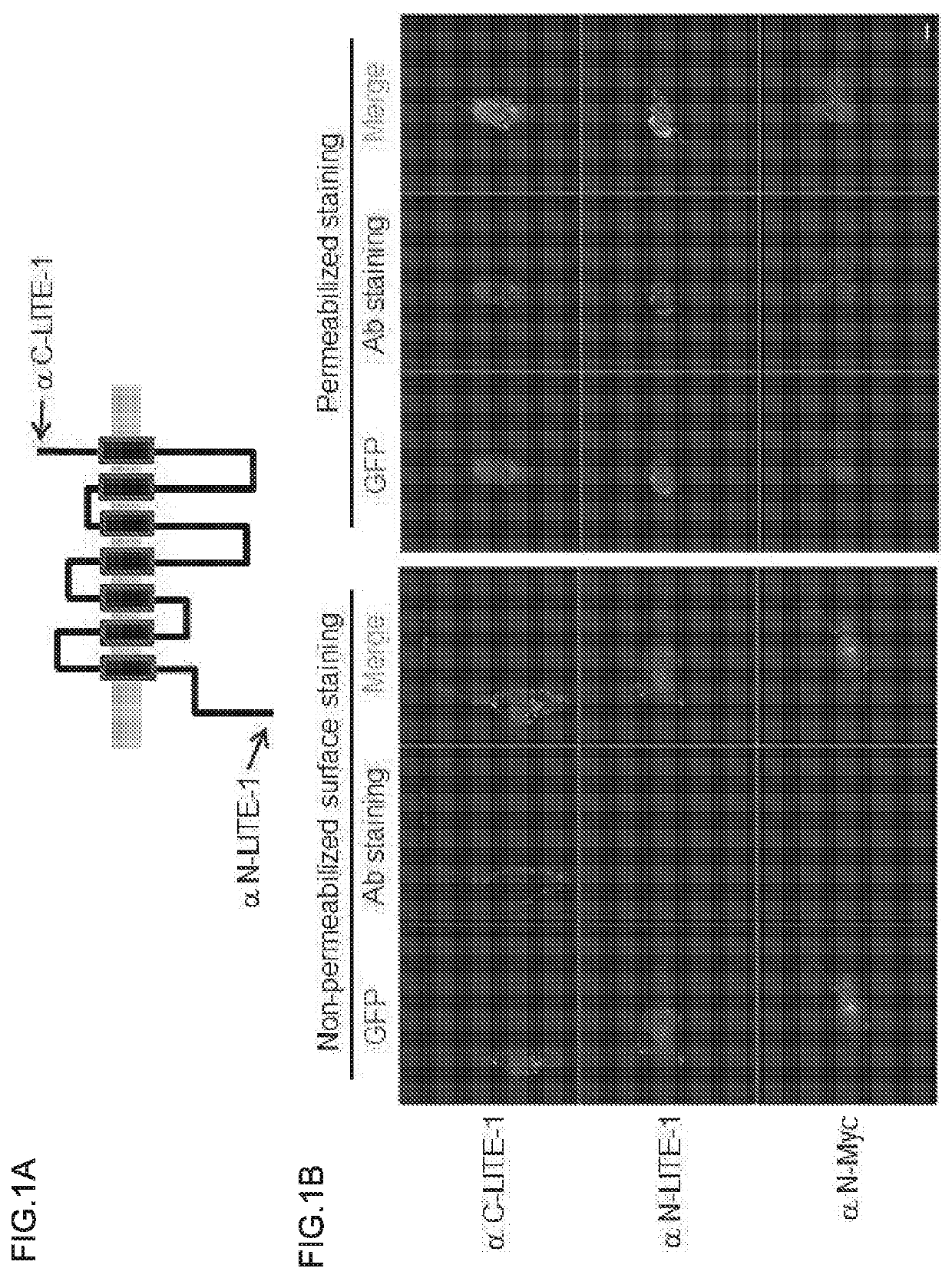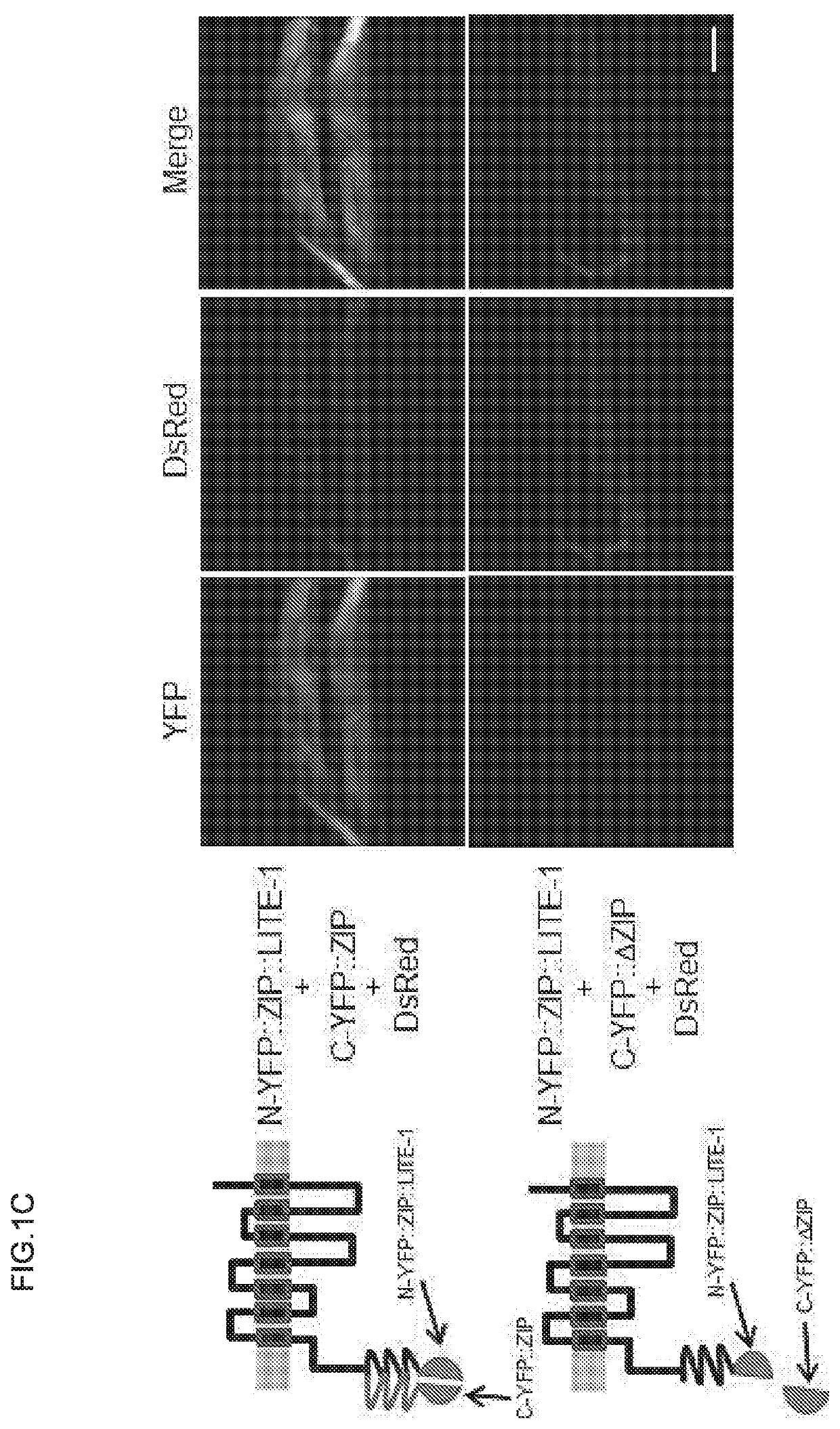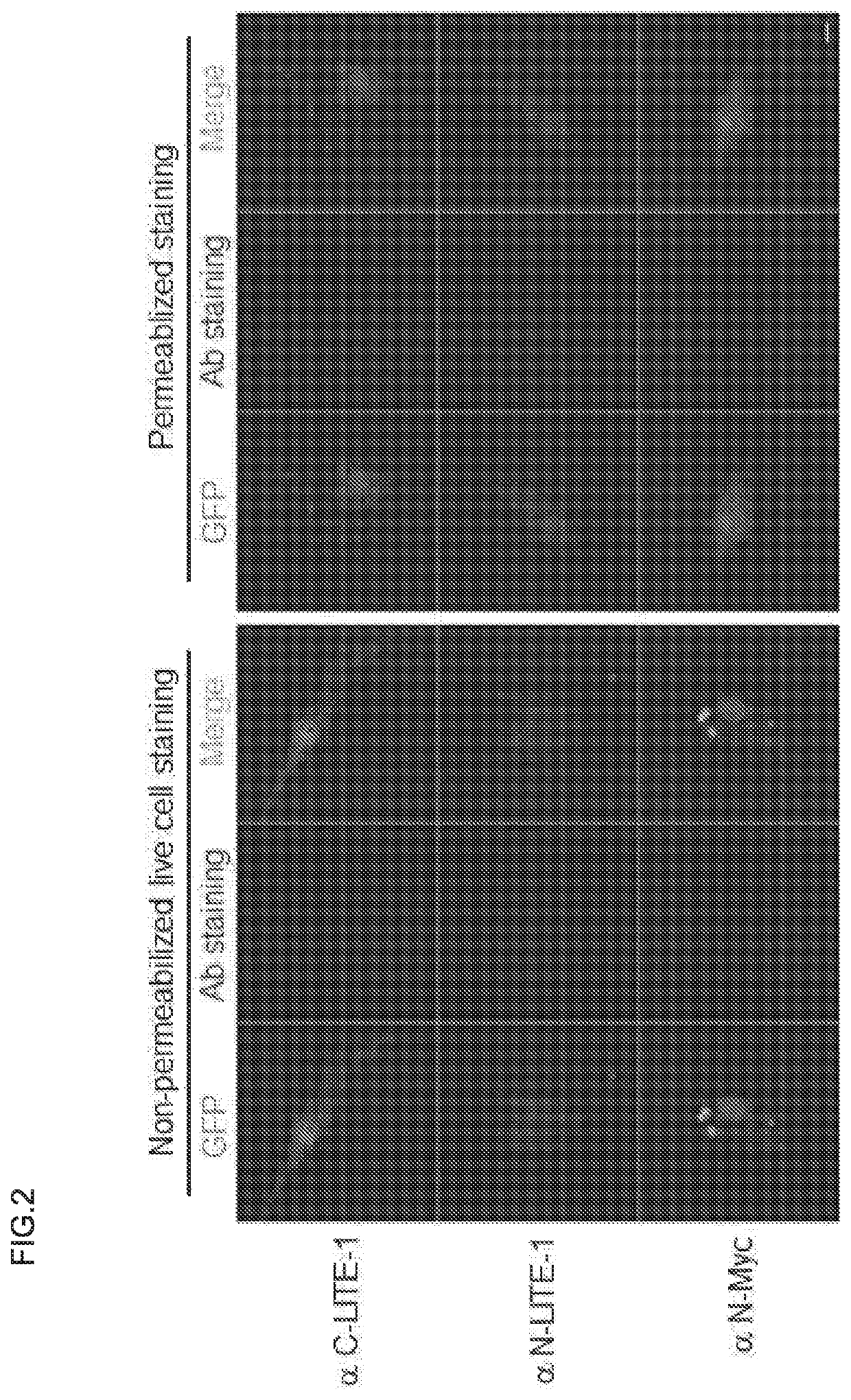Compositions and methods for blocking ultraviolet radiation
a technology of compositions and ultraviolet radiation, applied in the direction of peptide/protein ingredients, pharmaceutical delivery mechanisms, toilet preparations, etc., can solve the problems of skin damage, skin cancer, skin cancer, and the chronic effects of uv exposure can be much more serious, even life-threatening,
- Summary
- Abstract
- Description
- Claims
- Application Information
AI Technical Summary
Benefits of technology
Problems solved by technology
Method used
Image
Examples
example i
[0118]This example demonstrates that LITE-1 adopts a membrane topology opposite to conventional 7-TM receptors.
[0119]As a first step, it was considered whether LITE-1 is related to any known photoreceptors. LITE-1 is predicted to contain 7-TM domains (FIG. 1A). The only known 7-TM photoreceptors in metazoans are opsins, but LITE-1 has no significant homology with opsins at the sequence level (Edwards et al., 2008, supra; Liu et al., 2010, supra). As both insect OR (olfactory receptors) and GR (gustatory receptors) members were shown to possess a membrane topology opposite to conventional 7-TM receptors (Benton et al., PLoS Biol 4, e20 2006; Zhang et al., PloS one 6, e24111 2011), it was thus questioned whether LITE-1 and opsins are even related at the membrane topology level. To probe the membrane topology of LITE-1, antibodies were raised against the N- and C-termini of LITE-1 (FIG. 1A). Immunostaining with these antibodies did not reveal consistent LITE-1 expression in worm tissue...
example ii
[0121]This example demonstrates the purification of LITE-1 protein from worm lysate.
[0122]Examples were conducted asking the question—is LITE-1 a photoreceptor? A lack of clear similarity to known photoreceptors does not necessarily disqualify LITE-1 as a photoreceptor. To address this question, a simple, yet definitive approach is to examine whether purified LITE-1 protein can capture photons by spectrophotometry (Wang and Montell, 2007, supra; Yau and Hardie, 2009, supra). All known photoreceptors were verified by this approach (FIG. 3C). To this end, an expression system was searched for that would allow us to purify a sufficient amount of LITE-1 protein for spectrophotometric analysis. Muscle cells thus came to attention, as they constitute a major mass of worm tissues and have been successfully utilized as a heterologous system to functionally express receptors and channels (Salom et al., FASEB J 26, 492-502 2012; Wang et al., Neuron 75, 838-850 2012). Importantly, it has been ...
example iii
[0124]This example demonstrates that purified LITE-1 protein absorbs photons
[0125]By subjecting purified LITE-1 protein to spectrophotometric analysis, it was found that it exhibited strong absorption of UV light, with two absorbance peaks at 280 nm and 320 nm (FIG. 4G). Thus, LITE-1 can capture both UVB and UVA light (WHO definition of UVB: 280-315 nm; UVA: 315-400 nm). As a comparison, at the same concentration (0.4 μM), BSA showed no such absorption (FIG. 4G). In addition, bacterial rhodopsin (bRho), which is a commercial product obtained from Sigma Co., exhibited minimal absorption at its signature peak 568 nm (FIG. 4H). Only at 10× concentration (4 μM) was it possible to detect modest light absorption in bacterial rhodopsin (bRho), which was still much weaker than that found in LITE-1 (FIG. 4H). It should be noted that though bRho exhibited weaker photoabsorption compared to LITE-1, its extinction coefficient (62,000 in FIG. 4H vs. 63,000 in FIG. 4I), as well as its spectral pr...
PUM
| Property | Measurement | Unit |
|---|---|---|
| photoprotective | aaaaa | aaaaa |
| photosensitive | aaaaa | aaaaa |
| extinction coefficient | aaaaa | aaaaa |
Abstract
Description
Claims
Application Information
 Login to View More
Login to View More - R&D
- Intellectual Property
- Life Sciences
- Materials
- Tech Scout
- Unparalleled Data Quality
- Higher Quality Content
- 60% Fewer Hallucinations
Browse by: Latest US Patents, China's latest patents, Technical Efficacy Thesaurus, Application Domain, Technology Topic, Popular Technical Reports.
© 2025 PatSnap. All rights reserved.Legal|Privacy policy|Modern Slavery Act Transparency Statement|Sitemap|About US| Contact US: help@patsnap.com



